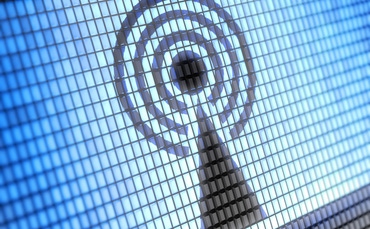Ofcom has announced it is coordinating testing of wireless technology that uses white space spectrum to potentially deliver a range of digital services including internet access in rural areas, wifi-like services, video streaming or M2M connectivity.
October 10, 2014

Ofcom has announced it is coordinating testing of wireless technology that uses white space spectrum to potentially deliver a range of digital services including internet access in rural areas, wifi-like services, video streaming or M2M connectivity.
The technology uses gaps between frequency bands, known as white spaces, and is being tested in cooperation with a number of organisations across the country, including Google, Sky, Love Hz and ZSL London Zoo.
The advantage of white spaces compared to other technologies such as Bluetooth and wifi lies in its ability to travel longer distances and penetrate walls more easily.
“In a world where consumers’ demand for data services is experiencing huge growth, it is essential we find the most efficient ways to share the airwaves,” Philip Marnick, Group Director, Spectrum Policy Group said. “White space technology could be one way of meeting this demand. These trials are an important first step in Ofcom understanding whether white space can be used in other spectrum bands.”
The technology is currently being trialled by ZSL London Zoo, together with equipment providers MediaTek and 6Harmonics, on Google’s spectrum database for live video streaming of animals.
The technology is also being tested for use in flood defence through a wireless sensor network by Love Hz, Nominet and Oxford Flood network. The sensors are put in place by residents in the area to measure water levels and send data in real-time over the internet.
“Oxford has already had major issues with flooding this year, and it’s great to be able to apply the emerging technologies that we are working on in Nominet R&D, like TV white space, to offer wireless connectivity over large distances to tackle old problems,” Adam Leach, Director of Research and Development at Nominet said. “This partnership between us and Love Hz illustrates the exciting possibilities of the Internet of Things, it’s a really practical way to use it to help communities prepare for and effectively manage emergencies.”
“The Internet of Things is often seen as a far-off technology of the future,” Ben Ward, Director of Love Hz said. “The Oxford Flood Network shows it’s happening right now, here in Oxford, and anyone can be a part of it. People are solving real-world problems with cutting edge technology.”
According to Ofcom, white space technology is one way to respond to the ever growing demand for data in the UK, and the regulator is planning to release more spectrum in the future as it is made available.
The next largest public sector spectrum release will be that of the Ministry of Defence, which is freeing up its 2.3GHz and 2.4GHz bands. In all, 500MHz of spectrum between 400MHz and 5GHz, which is currently used by the UK public sector, is planned to be made available by 2020.
Ofcom is also supporting other forms of wireless innovation, as demonstrated by a spectrum allocation in December last year for M2M (machine-to-machine) networks. The regulator expects to be able to roll out the new technology sometime next year, provided by successful completion of testing and policy development.
About the Author(s)
You May Also Like








.png?width=300&auto=webp&quality=80&disable=upscale)


_1.jpg?width=300&auto=webp&quality=80&disable=upscale)


.png?width=800&auto=webp&quality=80&disable=upscale)